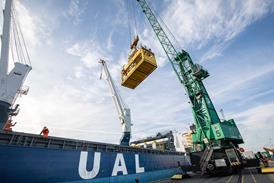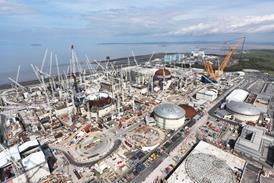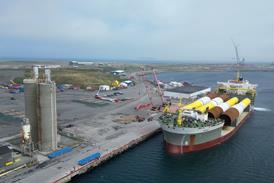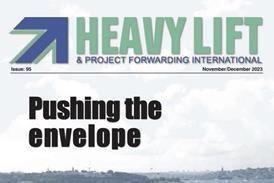UECC has taken delivery of its first dual-fuel LNG battery-hybrid pure car truck carrier (PCTC).
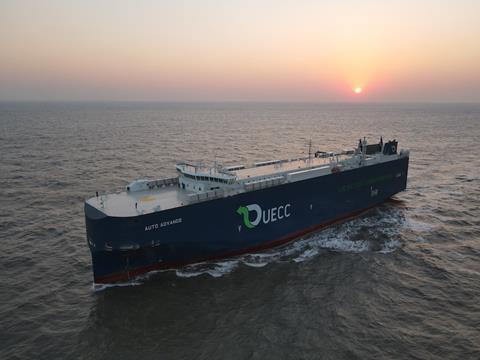
The vessel, to be named Auto Advance, is the first in a series of three newbuild PCTCs measuring 169 m x 28 m with capacity for 3,600 vehicles on 10 cargo decks. The ships are being delivered from China’s Jiangnan Shipyard. The remaining two sister vessels are scheduled for delivery in 2022.
“Having brought into operation the first-ever dual-fuel LNG PCTCs five years ago, UECC is now taking delivery of the first of three of the world’s first dual-fuel LNG battery-hybridPCTCs to be built. This is another big step forward in eco-friendly ship operations that shows we walk the talk,” said UECC chief executive Glenn Edvardsen.
LNG battery-hybrid technology, together with an optimised hull design for better fuel efficiency, will enable these newbuilds to exceed the IMO requirement to cut carbon intensity by 40 percent from 2008 levels within 2030.
Emissions of carbon dioxide will be reduced by around 25 percent, SOx and particulate matter by 90 percent and NOx by 85 percent from the use of LNG, while the newbuilds will also meet the IMO’s Tier 3 NOx emissions limitations for the North Sea and Baltic Sea.
Dual-fuel engine technology has been combined with an energy storage system (ESS), supplied by Finland’s WE Tech, incorporating a battery package from Corvus Energy that will be charged by a permanent magnet, directly driven shaft generator or dual-fuelled generators.
The ESS, which will provide power to the main switchboard with a DC link for power distribution, will enable peak shaving for the main engine and auxiliaries to reduce fuel consumption and emissions, with a controllable pitch propeller, bulb rudder and dual-fuel boiler also part of the power system.
These vessels only need two auxiliary dual-fuel gensets, in addition to the main engine, as the ESS and shaft generator provide a spinning reserve to eliminate the need for another genset that would normally be required.
The battery-hybrid solution, which has gained DNV’s Battery Safety notation, is controlled by an energy management system, supplied by Kongsberg Maritime. Batteries can be most efficiently charged while at sea using the shaft generator so that they are fully charged when entering a port, enabling the vessel to manoeuvre using bow thrusters driven solely by battery power.
“This will effectively eliminate emissions while in port and these vessels are also equipped to connect to green power from shore that is becoming increasingly available in order to reduce harmful emissions of NOx, SOx and particulate matter,” said UECC’s head of ship management and newbuilding Jan Thore Foss.
UECC’s energy and sustainability manager Daniel Gent added: “LNG is presently the most environment-friendly and widely available low-carbon fuel, with an estimated emissions reduction of around 25% compared with other fossil fuels.
“We are therefore taking advantage of the best available fuel solution now and combining this with hybrid technology to further cut emissions. But we are not locked into LNG and these dual-fuel engines are also ready to use alternative low-emission fuels such as biofuel, bio-LNG and synthetic LNG as these become commercially and technically viable.”


